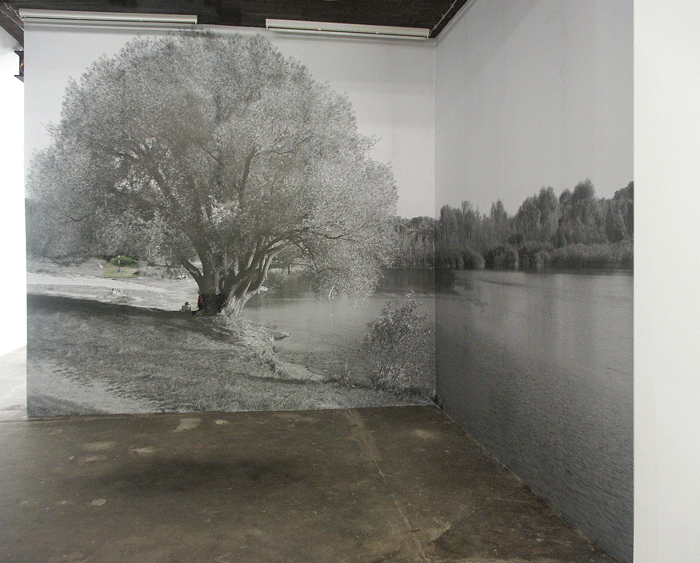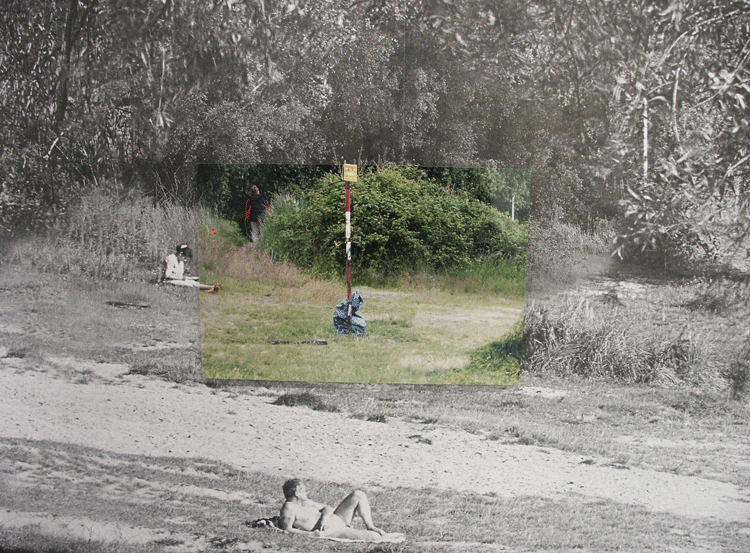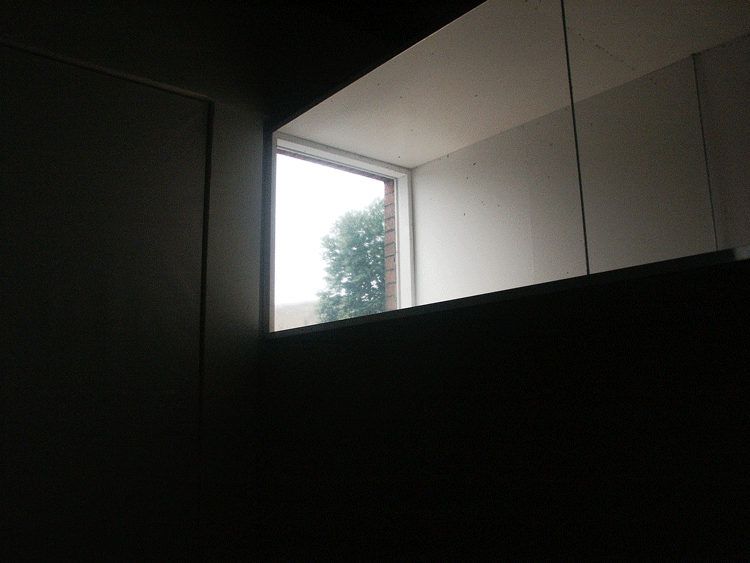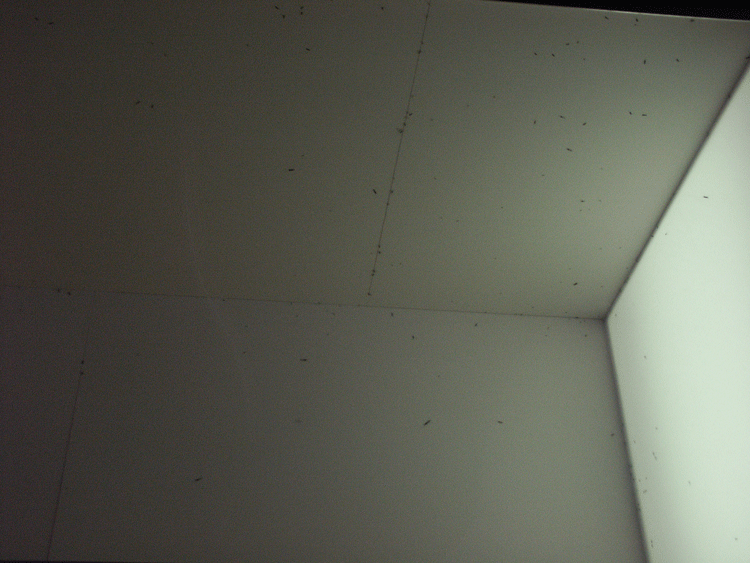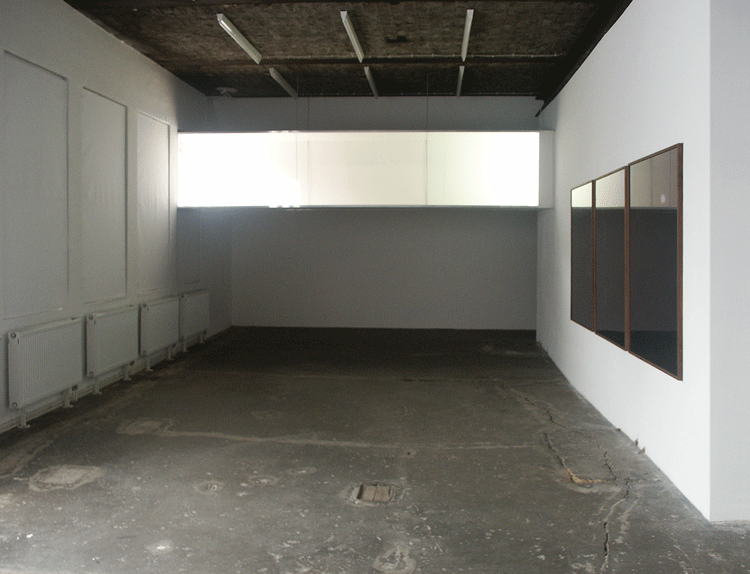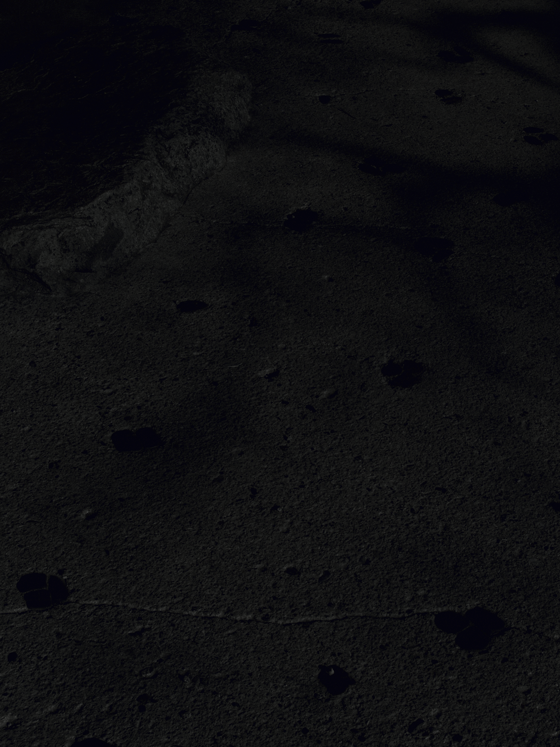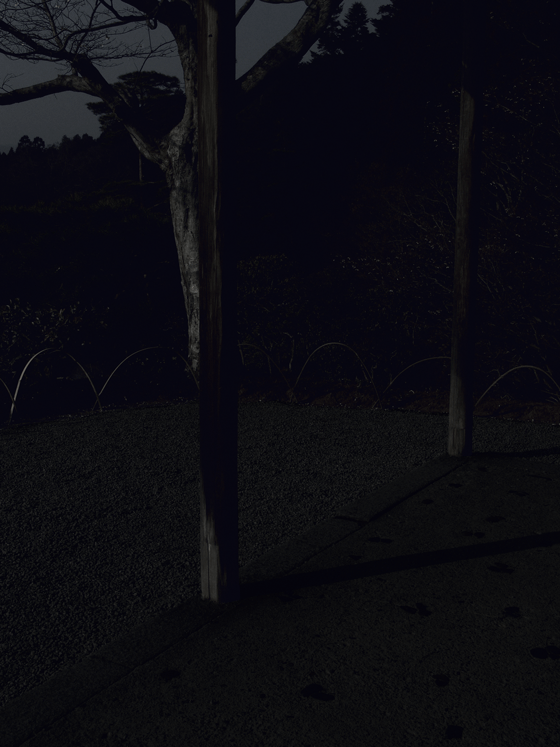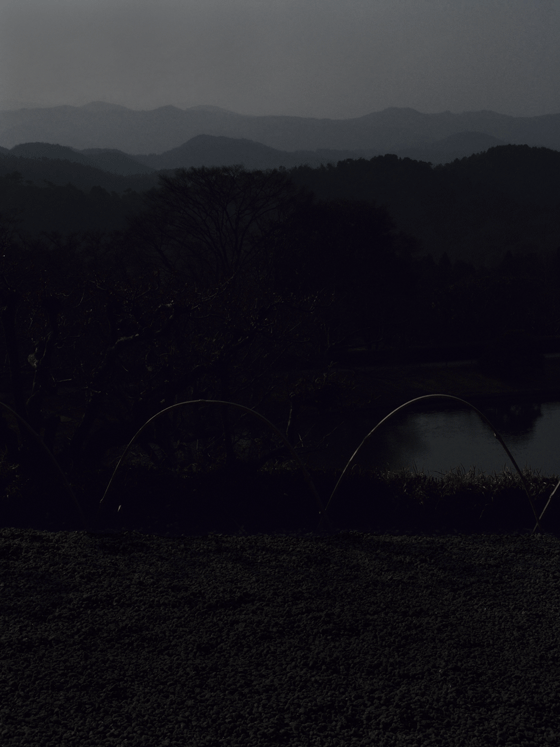In distinctive black and white tones, Heidi Specker, Andreas Koch und Chen Xiaoyun present their works in early summer at BüroFriedrich-berlin. A preoccupation with the embodiment of the complex correlation between nature and its effect on human perception and behavior accumulate in a central subject for the works of the three artists from Berlin and Hangzhou. One analyzes the beauty of shadows in nature through the examination of traditional Japanese aesthetics, another attempts to expose the human figure and its effect on nature. The third displays the human being in its modification through the progress of industrialization and urbanization.
Chen Xiaoyun (*1971 in Hubei, CN, lives and works in Hangzhou) shows with the two videos DRAG, 2006 and LASH, 2005 the preoccupation of the human individual with its environment, which – as merely a cog in the machinery of increasing industrialization – is dominated by physical exertion. As an expression of the pointlessness of redundant work, DRAG shows a man, who pulls with all his might a rope, whose end is fixed to a wall. ‘You have no reason to know nothing, about all darkness.’ (Chen Xiaoyun) And the darkness appears in the shadow world behind the wall.
LASH displays the image of black night. Hints of the plot are only visible through short flashes of light, whose recurring quick bursts are accompanied by the crack of a whip; highlighting scenes of a man and a horse, who both work until burnt-out. ‘A flash is a crack of the whip, and time is an individual religion.’ (Chen Xiaoyun) From a new Asian perspective, this work asks new questions of the phenomenon of work in our times.
Andreas Koch (*1970 in Stuttgart, GER, Lives and works in Berlin) transforms the entrance of BF-b with a romantic, monumental reproduction of a seascape. With a black and white wallpaper installed across a corner, the landscape surrounds the viewer like a diorama from the 19th century. Single details and small scenes, hung in hyper-resolution colour quality on top of the wallpaper, imply a narrative element and refer to little anecdotes of daily life.
Andreas Koch’s second work contradicts the romantic traits of the first. Visually reminiscent of a minimal artwork, a glass tunnel, installed with an opening to the Spree River, in which a lightbox has been enclosed, attracts the large population of mosquitos and spiders inhabiting the river. will be enticed into the sculpture during the night and slowly transform it.
Heidi Specker (*1962 in Damme, GER, lives and works in Berlin) presents her new series Day for Night, the result of her trip to Japan in March 2006. The intense examination of the effect of light and shadow mark the three dark exposures of the Imperial Villa and gardens of Shugakuin as well as the two bright architectural photographs of the terrace of her hotel in Tokyo.
As an origin of Heidi Speckers studies, In Praise of Shadows written in 1933 by the Japanese author Junichiro Tanizaki provides a basis. In his reflections on the origin of Japanese aesthetics, Tanizaki contrasts the Japanese beau ideal of muted colors and surfaces with the bright illumination of the Western World. By contrasting the whitewashed walls of her Tokyo hotel with the intensely darkened exposure from the Japanese garden – analog to the Day-for-Night method known from film – , Heidi Specker pays homage to this sensuous essay about the beauty of shadows.
